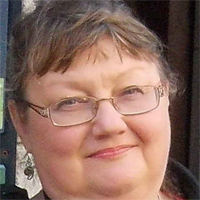The snow bunting belongs to the finch family. This is the largest bird family in the world. Most of the species are seed eaters with cone-shaped bills. In Ireland there are still two breeding members of the bunting group. These are the yellow hammer and the reed bunting. Snow Bunting photo
The snow bunting is sparrow sized, between 6 and 7 inches with a wingspan of 12 to 13 inches. In winter the male has light buff markings on its crown, ears and sides. The female is similar with more black on her tail. In their journey to the breeding site on the Arctic tundra they shed this color and arrive with only black and white plumage. Despite the duller plumage of the wintering birds in Ireland, it is still very exciting to see a flock rise up from a field in those cold, dark days.
The snow bunting is not shy and will allow humans to approach. On the American frontier, and elsewhere, many of them were caught for food.
The range of this little bird is said to be circumpolar. It breeds in northern Alaska, northern Greenland, Iceland and, a bit closer to Ireland, in the Scottish Highlands and Scandinavia.
The birds that arrive in Ireland are escaping the savage conditions of their native habitat in the winter. These birds are said to be capable of withstanding temperatures of fifty below zero. They tunnel in the snow to keep warm at times.
They travel in flocks. These flocks shift shape. The movement of the individuals and their dramatic coloring makes the swirling ensemble resemble a snow flurry. A sudden drop to earth indicates that a food source has been found and often the birds blend in so well there, that they disappear. It is one of those reality-shifting experiences that we all have, cherish and somehow cannot either retain or forget, to see a flock take to the air, as they materialize from the bleak winter landscape resembling a snowstorm that gravity forgot.
The closest breeding population is in the Highlands of Scotland. It consists of about one hundred pairs. Global warming may affect this population. There have been no reports of a pair breeding in Ireland in many years. There are, however, reports of sightings here. These tend to come from the coast or higher elevations. In 1986 a flock of about 1,000 was spotted near Lough Foyle.
The snow bunting feeds on seeds and when available, on insects also and, in coastal locations, on small crustaceans. They are busy feeders and rarely stand still.
Their nests are made of grass and lined with mammal hair and feathers. There are 4 to 6 eggs and incubation takes two weeks. They nest, in the high Arctic, above the tree line. During this time there are 24 hours of daylight there. The predators there have to stockpile reserves for the colder time ahead. This must be a harvest time for them. Despite this level of predation the bunting has survived in the Arctic. They nest on the open tundra or, if there is a man-made structure around, like the sparrow, they will nest in it.
While the snow bunting is a rare sight in Ireland, it is not impossible to add them to your bird list. Keep a sharp eye out when traveling in remote areas, especially on the west coast; you never know when they’re going to show up in winter. It can be quite rewarding to keep the binocular
Sibley Guide to Birds


